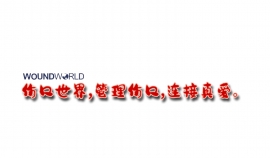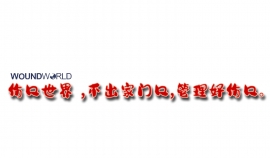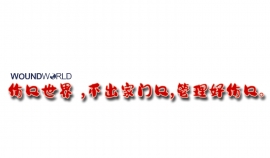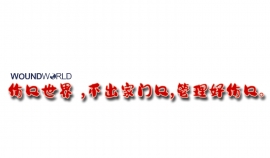文献精选
任荣鑫 赵红艺
北京医院整形外科 国家老年医学中心 中国医学科学院老年医 学 研 究 院,北 京
100730
通信作者:赵红艺,Email:该Email地址已收到反垃圾邮件插件保护。要显示它您需要在浏览器中启用JavaScript。
DOI:10.3760/cma.j.issn.1671-0290.2023.03.020
Treatment with high-intensity statins, such as atorvastatin 20 mg upwards, results in a 36% proportional increase in new type 2 diabetes diagnoses compared to placebo, with the majority of the new diabetes occurring in people already close to the diabetes glycaemic threshold, according to this meta-analysis of participant-level data from the Cholesterol Treatment Trialists’ Collaboration published in The Lancet Diabetes & Endocrinology. A smaller 10% proportional increase occurs with low- or moderate-intensity statins. Although previous meta-analyses of summary data from the statin trials have highlighted this increased risk, they could not fully quantify the size and timing of increases or determine who is at greatest risk. People with pre-existing diabetes treated with statins are also at risk of worsening glycaemia, particularly with high-intensity statins. However, the benefits of statins in reducing cardiovascular events in those at high risk far outweigh the impact of these increases in incident type 2 diabetes, so this study should not change prescribing habits. Nonetheless, it reminds us of the importance of counselling regarding increasing glycaemia risk and of encouraging lifestyle discussions around weight, eating patterns, sleep and physical activity, which can not only reduce the risk of type 2 diabetes but also improve the cardiovascular risk the statin is being used to treat.
Pam Brown
GP in Swansea
Citation: Brown P (2024) Diabetes Distilled: Statin heart benefits outweigh diabetes risks. Diabetes & Primary Care 26: [Early view publication]
Effective management of exudate is crucial for ensuring timely wound healing. Summarised in this product focus are 11 clinical studies (incorporating the experience of 179 patients), indicating that the ActivHeal® PHMB Foam dressing range (Advanced Medical Solutions Ltd.) is effective at treating infected wounds, managing wound exudate, debridement/wound cleansing, and enhancing the quality of life in patients with a various wound types, including venous leg ulcers (VLU), diabetic foot ulcers (DFU), pressure ulcers (PU), burns and postoperative surgical wounds. The use of the antimicrobial agent polyhexamethylene biguanide (PHMB) provides an effective defence against a broad spectrum of microorganisms, including antibiotic-resistant microorganisms, commonly associated with wound colonisation and infection. This evaluation does not aim to be a systematic or narrative review but rather a selection of the most pertinent publications summarising the clinical evidence supporting ActivHeal PHMB Foam range for the treatment of various chronic and acute wounds.
Rebecca Forder
Senior Clinical Research Manager, Advanced Medical Solutions, Winsford, UK
Alan A Rogers
Independent Wound Care Consultant, Flintshire, UK
Karen Ousey
Professor of Skin Integrity, Director for the Institute of Skin Integrity and Infection Prevention, Department of Nursing and Midwifery, University of Huddersfield, Huddersfield, UK
Mark G Rippon
Visiting Clinical Research Fellow, Institute of Skin Integrity and Infection Prevention, University of Huddersfield, Queensgate, Huddersfield, UK
Key words
- ActivHeal PHMB Foam
- Exudate management
- Infected wounds
- Wound healing
Declaration of interest
This publication was supported by Advanced Medical solutions.
Negative pressure wound therapy (NPWT) supports the healing process by removing fluid and drawing out the infection from a wound, promoting the growth of new tissue. The device works by providing and distributing negative pressure evenly across the wound bed, either through the application of an open cell foam or a gauze dressing. NPWT provides a warm, moist wound bed while removing wound fluid that contains factors that inhibit cell growth, enhances wound oxygenation and improves the flow of blood and nutrients to the wound. NPWT also creates mechanical forces that influence the wound macroscopically, inducing cell proliferation, cell migration to the wound and angiogenesis. For infected wounds, the device can be used to instil antibiotics. In this article, a 57-year-old Caucasian woman with respiratory failure developed sepsis secondary to an intra-abdominal infection with abscess. Vancomycin 1mg/mL wound instillation, instilled as 100mL every 3 hours with a dwell time of 10 minutes, was administered concomitantly with intravenous vancomycin in the successful management of this patient.
Alison Bunnell
Doctor of Pharmacy Candidate 2022, North Dakota State University, Fargo, ND, USA
Erin Beauclair
Doctor of Pharmacy Candidate 2022, North Dakota State University, Fargo, ND, USA
Breanna Jones
Doctor of Pharmacy, Pharmacy Department, Sanford Medical Center Fargo, Fargo, ND, USA
Emily Greenstein
Advanced Practice Registered Nurse and Certified Nurse Practitioner, Wound Care, Sanford Medical Center Fargo, Fargo, ND, USA
Justin M Jones
Doctor of Pharmacy, Pharmacy Department, Sanford Medical Center Fargo, Fargo, ND, USA
Andrea R Clarens
Doctor of Pharmacy Pharmacy Department, Sanford Bemidji Medical Center, Bemidji, MN, USA
Key words
- Acute kidney injury
- Computed tomography
- Kidney Disease Improving Global Outcomes
- Negative pressure wound therapy
Declaration Emily Greenstein reports she has been a consultant for Urgo medical, 3M and Coloplast. 3M manufactures V. A.C VeraFlo. None of these manufacture or distribute vancomycin instillation described in this manuscript.




